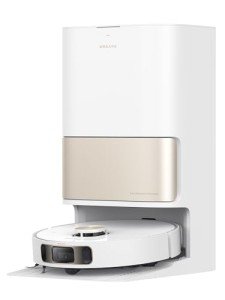Revolutionizing Home Maintenance: The Rise of Cleaning Robots
In an age where technology continues to influence daily life, cleaning robots have emerged as a substantial development in the field of domestic cleaning. These autonomously working machines have actually redefined how households manage cleaning tasks, supplying convenience and performance. With their ability to browse spaces, prevent challenges, and run on pre-set schedules, cleaning robots are ending up being essential tools for house owners wanting to enhance both their time and their living environment.
The Evolution of Cleaning Robots
Cleaning robots have gone through an incredible change considering that their creation. What began as rudimentary devices has actually advanced into advanced devices geared up with sophisticated functions. Below is a table highlighting some crucial milestones in the advancement of cleaning robots.
| Year | Milestone | Description |
|---|---|---|
| 1996 | First Commercial Robot | The first robotic vacuum, Electrolux's Trilobite, was introduced. |
| 2002 | Roomba Launch | iRobot released the Roomba, making robotic vacuum cleaners popular. |
| 2004 | Mapping Technology Introduced | iRobot presented smarter navigation abilities, enabling better cleaning paths. |
| 2012 | Mobile phone Integration | The intro of mobile app control allowed users to control robots from another location. |
| 2020 | Advanced Sensors & & AI | Robots started using AI for boosted mapping and item acknowledgment. |
Kinds Of Cleaning Robots
As technology has advanced, numerous types of cleaning robots have appeared, each developed to deal with different cleaning requirements. Some of these include:
Robotic Vacuums
- Developed to autonomously vacuum floorings, they typically include sensors to navigate around rooms and return to their charging stations.
Robotic Mops
- These robots are geared up with mopping functionality, using water or cleaning services to scrub floorings.
Window Cleaning Robots
- Specifically engineered for window cleaning, these devices can climb up vertical surfaces using suction or magnetic systems.
Swimming Pool Cleaning Robots
- Designed for in-ground pools, these robots gather debris and even scrub the walls of the pool effectively.
Multi-tasking Robots
- Some contemporary cleaning robots integrate vacuuming and mopping abilities, providing flexible cleaning solutions.
How Cleaning Robots Work
The core performance of cleaning robots is centered around their ability to browse homes autonomously while executing cleaning jobs. Here's a breakdown of the essential elements that enable them to perform successfully:
- Sensors: Most cleaning robots are geared up with sensing units that assist them detect barriers, slopes, and edges, avoiding falls and collisions.
- Navigation Technology: Many robots utilize a mix of gyroscopes, accelerometers, and sometimes cameras or LIDAR for navigation. This enables them to map their environment and tidy efficiently without missing out on spots.
- Source of power: Most cleaning robots run on rechargeable batteries, with lots of efficient in returning to their charging docks when their power runs low.
- Cleaning Mechanisms: Whether through suction for vacuuming or turning brushes for mopping, cleaning robots include different mechanisms customized for efficient dirt elimination.
Benefits of Cleaning Robots
The incorporation of cleaning robots in households presents numerous advantages:
- Time-Saving: Cleaning robots can run on their own, enabling property owners to take part in other activities.
- Consistent Cleaning: With scheduled cleaning times, these robots ensure constant upkeep of the home.
- Hard-to-Reach Areas: Cleaning robots can access narrow areas and corners that conventional cleaning tools might fight with.
- Reduced Allergens: Regular cleaning helps minimize dust and allergens, adding to a healthier living environment.
Limitations of Cleaning Robots
Regardless of their many benefits, cleaning robots also present certain restrictions that users need to consider:
- High Initial Cost: While the price of cleaning robots has actually reduced with time, some advanced designs can be fairly costly.
- Inconsistent Performance: Not all robots carry out equally; some may deal with specific surface areas or dirt types, causing unacceptable outcomes.
- Restricted Capacity: Many robotic vacuums have smaller sized dustbin capabilities, requiring more frequent emptying than standard vacuum cleaners.
FAQs about Cleaning Robots
Q: Are cleaning robots worth the investment?A: Cleaning robots can be
a beneficial financial investment for those seeking time-saving services. They can significantly relieve the cleaning problem, specifically for hectic families. Q: Can cleaning robots be programmed?A: Yes, numerous cleaning robots include programmable schedules and modes, enabling users to set specific cleaning times and locations. Q: How do I keep my cleaning robot? best robot vacuum under 200 : Regular maintenance involves cleaning the brushes, clearing the dustbin, and periodically looking for software updates. Q: Are cleaning robots reliable on all surfaces?A: Most robotic vacuums are reliable on tough floorings and low-pile carpets. Nevertheless, effectiveness may
vary on thick carpets or certain kinds of rugs. Q: Do cleaning robots work well under furniture?A: Cleaning robots are designed to fit under many furnishings; however, the effectiveness can depend on the height of the furnishings.
Cleaning robots represent a breakthrough in the realm of
domestic tasks, offering a blend of innovation, convenience, and efficiency. While they are not a complete replacement for traditional
cleaning techniques, they significantly enhance housekeeping abilities. As advancements continue, future versions of these devices are expected to end up being much more intelligent, effective, and user-friendly, further incorporating into the smart homes of tomorrow. The modern-day property owner hence faces an amazing future where cleaning robots might take much of the drudgery out of home maintenance, allowing for a cleaner home with minimal effort.

